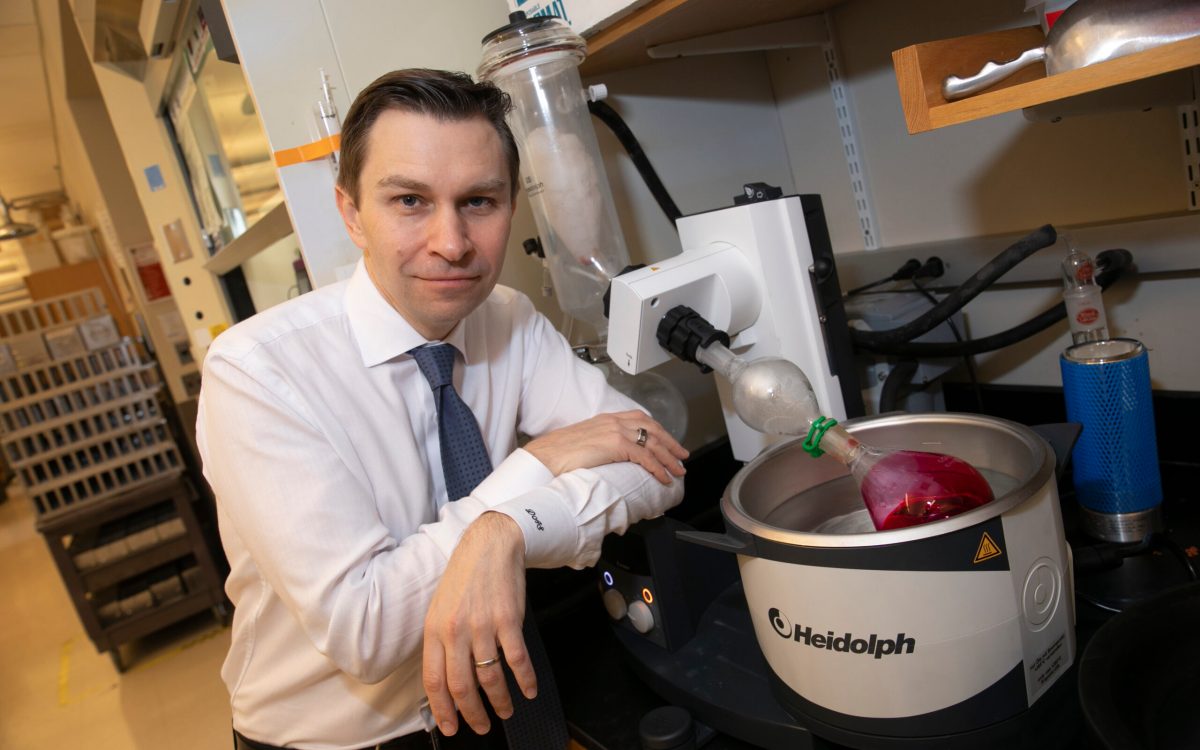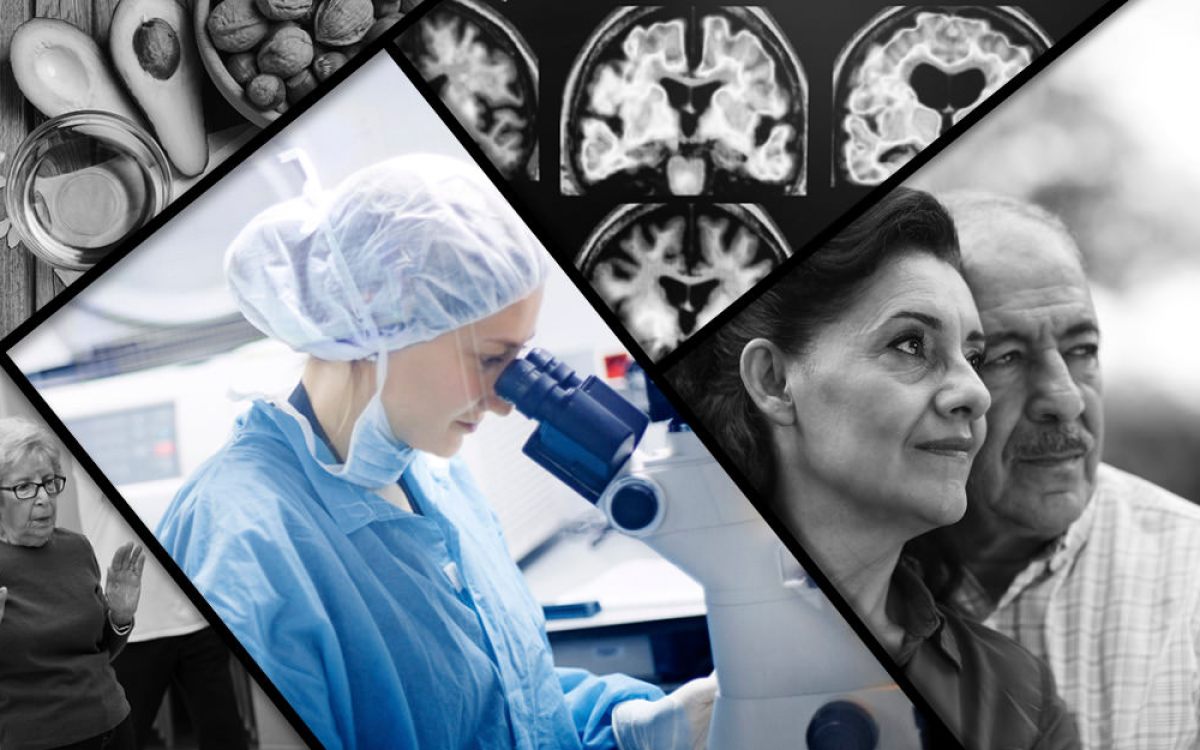
Illustration by Victoria Tentler-Krylov/Ikon Images
Has first person to live to be 150 been born?
Genetics professor outlines recent research on altering molecules that turn DNA on, off, reset cellular aging of body
Aging has been long believed to occur through accumulated mutations to DNA, which gradually interfere with the normal functioning of cells, tissues, and organs. In January, Harvard researchers reported that they’d turned the clock back on laboratory mice by altering the epigenome, a suite of molecules that turn DNA on and off in ways specific to different tissues. Because the epigenome is easier to alter than DNA itself, the finding raises the prospect of being able to reset the body to fight diseases such as Alzheimer’s, diabetes, cardiovascular disease, and cancer, whose incidence increases as we get older. The Gazette spoke with Genetics Professor David Sinclair, director of Harvard Medical School’s Paul F. Glenn Center for Biology of Aging Research, and postdoctoral fellow Jae-Hyun Yang about the work and its implications for human health and lifespan.
Q&A
David Sinclair and Jae-Hyun Yang
GAZETTE: David, you have said that you believe the first person to live to 150 has already been born. Does this work change that and is it possible that many people who are going to live to 150 have already been born?
SINCLAIR: Over the last 20 years, there have been a number of molecules that have been found to retard the aging process, at least in animals, and potentially a couple of drugs that are in humans. That made me optimistic that somebody who might make it to 150 has already been born. In this paper, we’re showing it’s possible to reset the age of the body up to as much as 50 percent. And, when you can reverse aging and not just slow it down, then all bets are off. We now know you can reset the eye multiple times and restore vision in old mice — that was our Nature 2020 cover article. In this paper, we’re showing that we can reverse aging in other tissues as well, using the same technology. So, if you can reset the age of the body multiple times, I think it would be dangerous to set an upper limit.
“We’re exploring the possibility that when we reset the age of the body, diseases like Alzheimer’s and cardiovascular disease go away.”
David Sinclair
GAZETTE: This research shows that, in addition to the understanding that aging results from DNA mutations, it also comes from degradation of the epigenome. Could you just briefly explain what the epigenome is and whether this is potentially good news for the aging field?
SINCLAIR: The older idea is that mutations drive aging and, if that’s true, the problem for age reversal is that mutations are very hard to fix. You’d need to repair trillions of them in the body to reverse aging. Instead, we think that it’s mostly due to the loss of epigenetic rather than genetic information, which is great news because we’ve also discovered that there’s a backup copy of the epigenetic information in every cell. So, instead of aging being a hardware problem, similar to having an old computer, we are discovering that it’s a software problem and you can reboot the software of an old computer and make it run like it’s new again.
GAZETTE: And the epigenome is basically molecules that tell the DNA what to do?
SINCLAIR: That’s right.
GAZETTE: What approaches might be able to affect the epigenome?
SINCLAIR: We already have a drug in development to reset the age of the body — it’s in nonhuman primates right now — to cure blindness. We think that the same technology that we use in this paper and in the monkeys could be used to reset the age of literally any part of the body. The applications are as broad as you can imagine — even resetting the brain, which seems to allow mice to learn again. We’re exploring the possibility that when we reset the age of the body, diseases like Alzheimer’s and cardiovascular disease go away. This would be a new way of treating the major diseases of the planet.
GAZETTE: Is it likely that the three genes you use, Oct4, Sox2, and Klf4, would be a treatment in humans? Are there concerns about them promoting cancer and having other side effects?
SINCLAIR: With every drug there are concerns about safety, including cancer. Over the last four years, we’ve conducted extensive studies in mice — and now in monkeys — to test their safety. So far, there are no warning signs that give me pause, though we need to do more tests to be sure. But I’ve been surprised how safe it is so far.
GAZETTE: This work took 13 years. Was there a breakthrough moment or was it more grinding, year after year, to get to this point?
SINCLAIR: It certainly was a grind. It was very difficult to be focused on a study that was not published for over a decade. Jae deserves a great deal of credit for persevering. The eureka moment — a eureka moment — was when we engineered the mice and then disrupted their epigenome, and, within a matter of months, the mice started to look old. I was sent a photo of those mice from a person who said, “Oh, my goodness, we have a sick mouse here.” And I said, “That’s not a sick mouse; that’s an old mouse.” That was the beginning of Jae’s journey to understand what was going on in these mice and if they were truly old.
GAZETTE: Jae, what kept you at it?
YANG: I always believed this was going to work, but when I saw the phenotype of the mouse — it really looks like an old mouse — I wanted to figure out what makes this mouse old. I analyzed all the tissues for physiological and molecular changes to make sure. Another surprising moment was when we found that, because these phenotypes are driven by epigenetic changes, we actually could reverse some of them by expressing OSK (Oct4, Sox2, and Klf4).
GAZETTE: You used three of the four Yamanaka factors to do this. All four make differentiated cells reset their clocks and revert to stem cells. Is using just three how you get them to go only part of the way back and stop them from resetting to an embryonic stage?
SINCLAIR: We did a lot of different combinations of genes when we started and this three-gene combination works really well. It’s not strong enough to make embryonic cells — it stops at about 50 to 75 percent reversal — there’s a barrier. We don’t understand what that barrier is, but it definitely exists. And there’s a sweet spot. Cells start out, and they don’t have any identity. They’re a fertilized egg. Then they get this identity as they develop into tissues and organs. But over time, this paper shows that you lose that identity again as you age. The three Yamanaka factors get you back to that identity state, but not to where you lose it by going back too far and becoming stem cells.
“These technologies are developing now, and the speed of development is getting faster and faster. So, I don’t think it’s far away that people will live to 150.”
Jae-Hyun Yang
GAZETTE: What is the relationship between your findings and things known to be anti-aging, like exercise and calorie restriction, which also have epigenetic effects. Are we seeing tips of the same iceberg or are these effects very different?
SINCLAIR: They’re manifestations of the same process. We actually showed in 2003 — a Nature paper on yeast — that the environment links to aging through longevity chains, the sirtuins, which are controllers of the epigenome. So, in yeast, we knew that. Now in mammals, what we know is that there are three sirtuins in the nucleus that help with DNA repair as well as epigenomic stability. And when you exercise, when you don’t eat three meals a day — you fast — and even if you have high temperatures and low temperatures, that stimulates the sirtuins to be more active. And we know that that can stabilize the epigenome.
YANG: There are multiple ways to manipulate the epigenome besides OSK. It can be temperature, as David mentioned, it can be mechanical stress, it can be drugs. People are already using many drugs to modulate the epigenome, especially for cancer treatment. So there are many other methods we can utilize to make cells of our body younger.
GAZETTE: Do you still look at aging as inevitable?
YANG: I think it is inevitable. Entropy always wins. It’s a law of physics. At some point, we should die, but it shouldn’t be too early. These technologies are developing now, and the speed of development is getting faster and faster. So, I don’t think it’s far away that people will live to 150.
GAZETTE: What is the next step? You’ve begun experiments in nonhuman primates. How far is this from the clinic?
SINCLAIR: Things look promising in the primate studies. If those are successful, then the first humans will be treated just a couple of years after the studies have finished. Does that mean it’ll work? No. But if it works to cure blindness in a monkey, I am optimistic it’ll work in a patient. And if we’re not successful in the next few years, somebody will be, because there has been about $5 billion invested in aging drug development just since our Nature paper came out in 2020. There are many companies now working on this. So, while we’re at the forefront, there are many others who should succeed if we’re not successful first.
GAZETTE: Any final thoughts?
SINCLAIR: If we’re right, there is a universal cause of aging in every tissue and in seemingly every species, from yeast to humans, and diseases like heart disease, diabetes, and Alzheimer’s are manifestations. If we’re able to slow down or reverse the aging process, this would be a radical new way of treating these diseases. The same treatment for heart disease could also cure Alzheimer’s and diabetes, and make you look younger as well. This is an exciting time. We could be witnessing a new approach to treating diseases in general.








